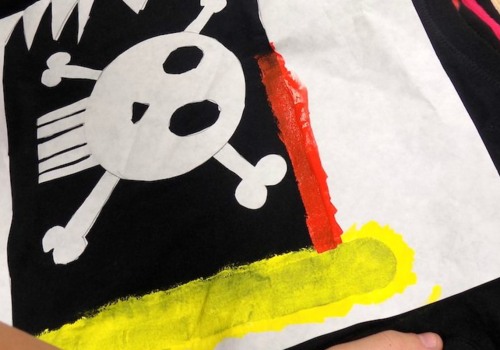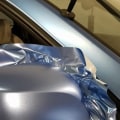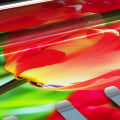Large format printing is a process of printing large images onto a variety of materials, such as vinyl, canvas, paper, and more. It is used for a wide range of applications, including posters, banners, wall graphics, signs, tradeshow displays, and more. It allows for high-quality printing of large images with vibrant colors and detailed designs. This type of printing is ideal for businesses that need to create large-scale promotional materials or signage. Unlike other types of printing, large format printing is a more specialized process.
It requires specialized equipment, such as wide-format printers, laminators, and other accessories to ensure the highest quality results. It also requires experienced professionals to operate the equipment, as well as to design and produce the finished product. Large format printing is an effective way to create large-scale promotional materials and signage that will capture the attention of potential customers. With its vibrant colors and detailed designs, it is sure to help boost sales and enhance your brand’s visibility. Large format printing involves the use of specialized equipment to create large format materials such as posters, signs, banners, and wall wraps. The materials used for large format printing are typically larger than standard sheets of paper, often measuring up to 48 inches wide and hundreds of feet long.
In order to accommodate the size of the materials, large format printers use wide-format media rolls rather than individual sheets of paper. Large format printing is used in many industries, including advertising, marketing, retail, event management, and more. It's often used to create promotional materials such as posters, banners, signs, window clings, and wall wraps. Large format printing can also be used to create prints for art shows, murals, and other displays. When it comes to choosing the right type of large format printer for your project, there are several factors to consider.
First and foremost is the type of material you plan to print on. Different types of printers are designed to work with different types of media rolls. For example, some printers are designed to work with glossy media rolls while others are designed to work with matte media rolls. It's important to choose the right type of printer for your project in order to ensure the best possible results. In addition to choosing the right type of printer for your project, you'll also need to consider the resolution of the printer.
Higher resolution printers will produce sharper images with more detail. However, these printers typically come with a higher price tag. In addition, high-resolution printers may not be able to produce prints at the speed you need for your project. Finally, you'll need to consider the cost of the printer and its associated supplies. Printer costs vary widely depending on the type and size of the printer you choose.
Additionally, you'll need to factor in the cost of replacement inks and media rolls when budgeting for your project.
What Are The Benefits Of Large Format Printing?
Large format printing offers a number of benefits compared to traditional printing methods. It's faster and more efficient than traditional methods because it doesn't require cutting and pasting individual pieces of paper together. Additionally, large format prints are more durable and long-lasting than traditional prints due to their use of durable media rolls instead of paper. The use of large format printing also allows for higher levels of detail and precision. The larger scale allows for a wider range of colors, and allows for the use of specialty inks and media.Additionally, large format printing is versatile, as it can be used to produce banners, posters, stickers, signs, and more. Overall, large format printing provides many advantages over traditional printing methods. It's cost-effective, efficient, and produces higher quality prints with greater detail. Additionally, it's more durable and long-lasting, making it ideal for producing marketing materials such as banners and signs.
How To Get Started With Large Format Printing
If you're interested in getting started with large format printing, the first step is to find a reputable printer who has experience working with large format materials. You'll need to choose the right type of printer for your project based on the type of material you plan to print on.Once you've chosen the right printer, make sure you have a budget in mind for your project so you can determine what type of printer is within your budget. Once you've chosen the right printer and established a budget, you'll need to review the available printing options. Some printers may offer a variety of printing options, including digital printing, screen printing, and vinyl printing. Depending on the size and complexity of your project, one type of printing may be better than another. Finally, it's important to understand the cost of large format printing. The cost for large format printing projects can vary significantly depending on the type of materials used, the quantity of prints desired, and other factors.
Make sure to get quotes from multiple printers to find the best deal. In conclusion, large format printing is an efficient and cost-effective way to create promotional materials such as posters, banners, signs, window clings, and wall wraps. It offers numerous benefits such as being able to produce high-quality prints with vivid colors, which can last for years to come. With the right equipment and supplies, you can ensure that your projects turn out exactly how you envisioned them. Understanding what large format printing is and how it works can help you make the most of this versatile printing technique.











Leave Message